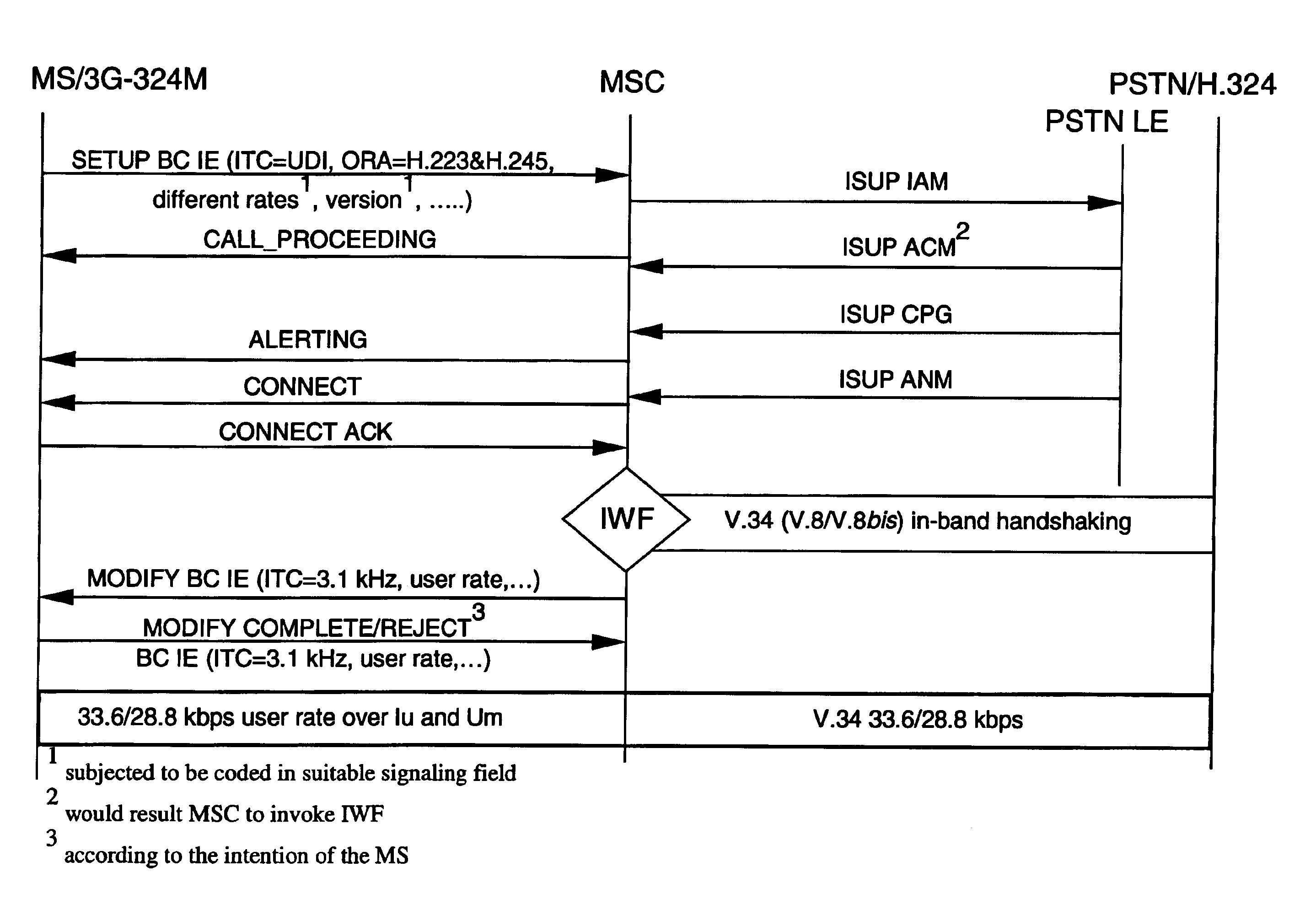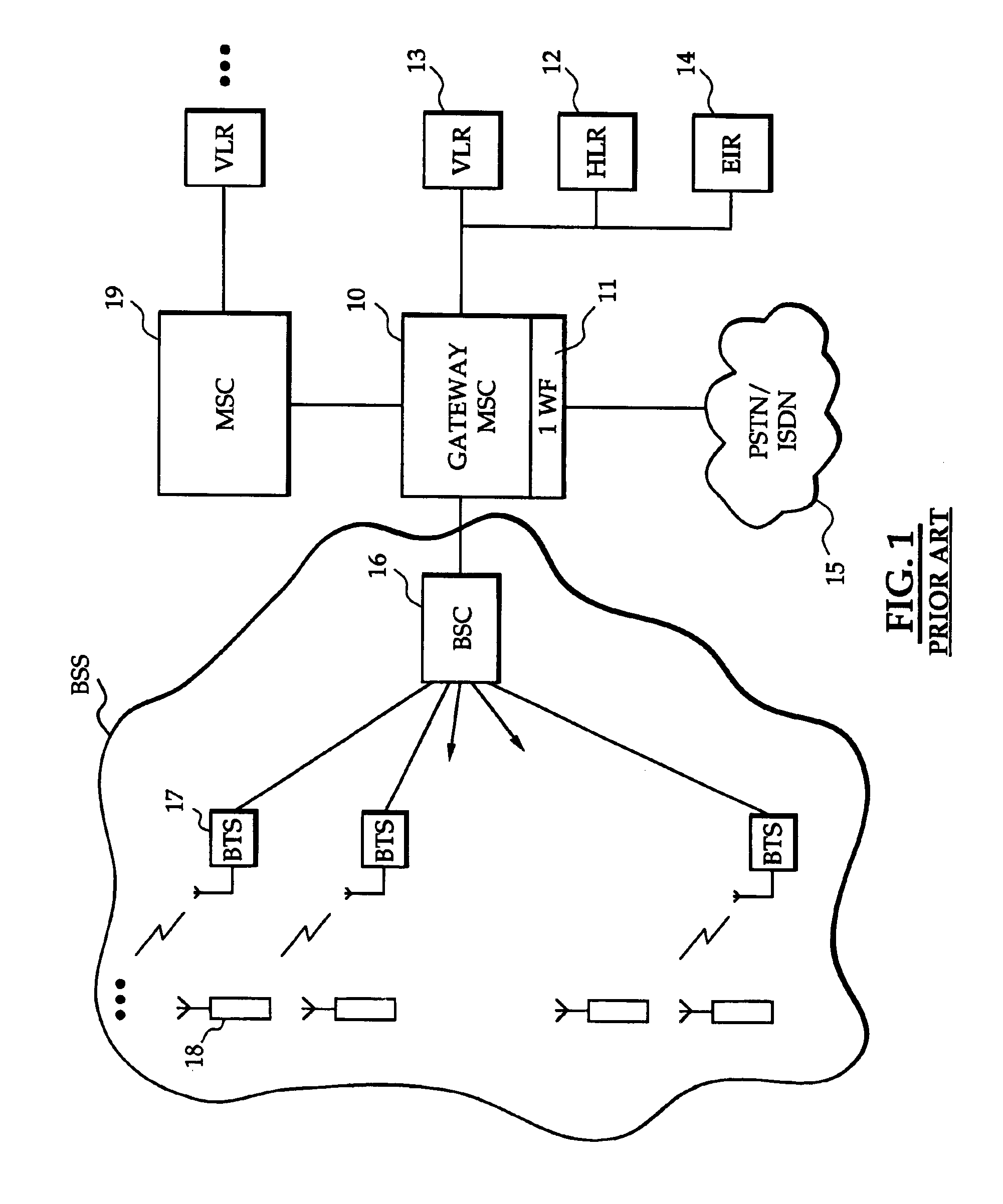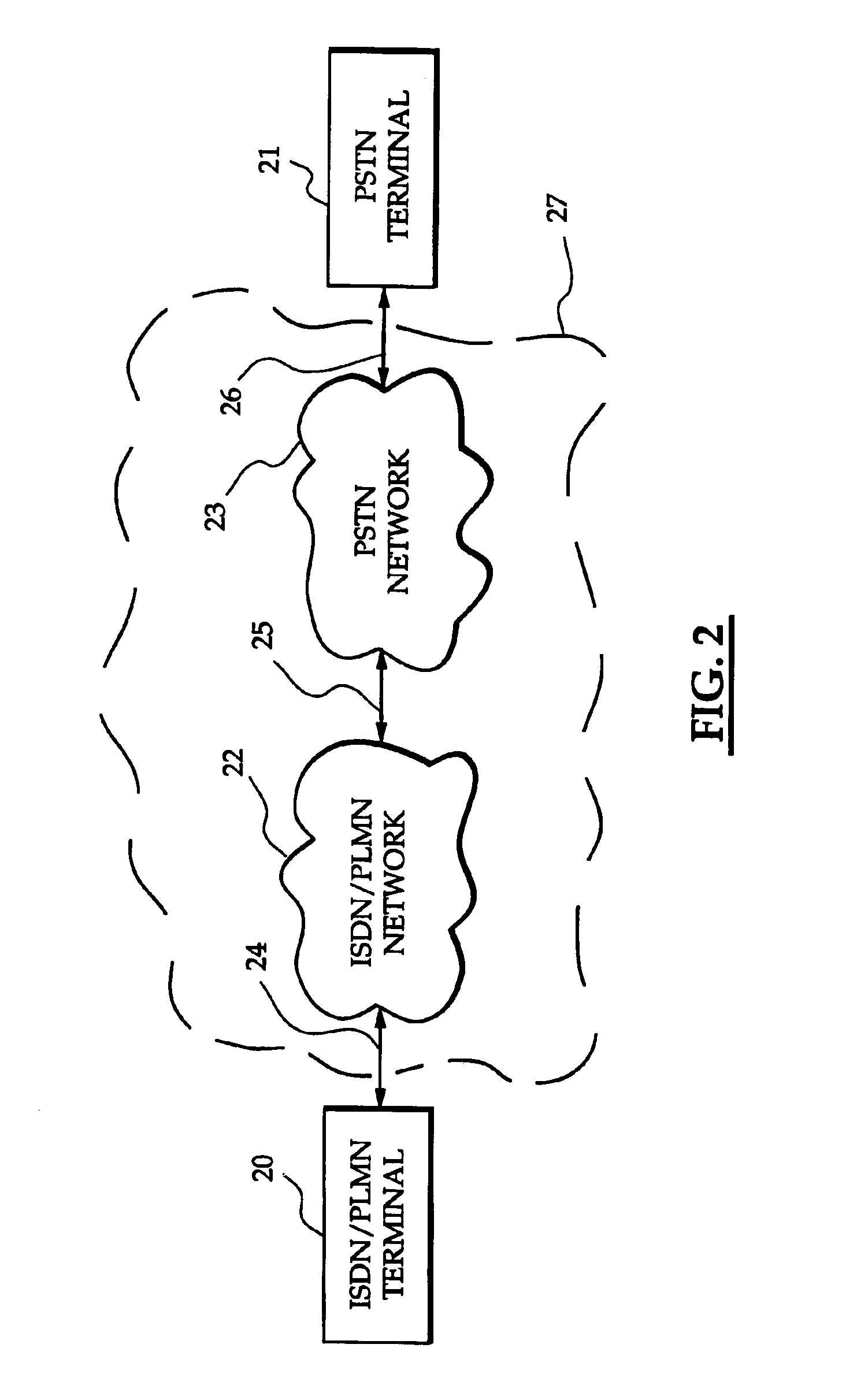Method for establishing a call in the presence of outband indication of PSTN involvement at multimedia call setup
a multimedia call and outband indication technology, applied in the field of method for establishing a call, can solve the problems of limiting the new multimedia applications, telecommunications network, and total isolation of the telecommunications network, and achieve the effect of reducing the possibility of a failing inband modem negotiation and reducing the setup time of the call
- Summary
- Abstract
- Description
- Claims
- Application Information
AI Technical Summary
Benefits of technology
Problems solved by technology
Method used
Image
Examples
case b
[0081]Regarding the above four cases, the following applies for calls from A:[0082]case a)—progress indicator No. 1 sent to A;[0083]case b)—progress indicator No. 2 sent to A;[0084]case c)—progress indicator No. 2 sent to A (location sub-field=private network);[0085]case d)—progress indicator No. 1 sent to A (location sub-field=private network).
case a
[0086]Similarly, the following applies for calls towards A:[0087]case a)—progress indicator No. 1 sent to A;[0088]case b)—progress indicator No. 3 se nt to A;[0089]case c)—progress indicator No. 3 sent to A (location sub-field private[0090]case d)—progress indicator No. 1 sent to A (location sub-field private network).
[0091]The use of progress indicator No. 4 is exemplified in the following scenarios associated with the Call Forwarding supplementary service. If a call is originated from user A to user B, then as stated above, in the interworking cases b) and c) (see FIG. 10), progress indicator No. 2 shall be sent to user A to indicate that interworking has occurred. If subsequently the call is forwarded from user B to user C, and user C is an ISDN user, progress indicator No. 4 shall be sent to user A.
[0092]According to the present invention, the use of Forward / Backward Call Indicators and the PI of ISUP messages in mobile multimedia call control in PLMN / ISDN involving a PSTN circu...
PUM
 Login to View More
Login to View More Abstract
Description
Claims
Application Information
 Login to View More
Login to View More - R&D
- Intellectual Property
- Life Sciences
- Materials
- Tech Scout
- Unparalleled Data Quality
- Higher Quality Content
- 60% Fewer Hallucinations
Browse by: Latest US Patents, China's latest patents, Technical Efficacy Thesaurus, Application Domain, Technology Topic, Popular Technical Reports.
© 2025 PatSnap. All rights reserved.Legal|Privacy policy|Modern Slavery Act Transparency Statement|Sitemap|About US| Contact US: help@patsnap.com



